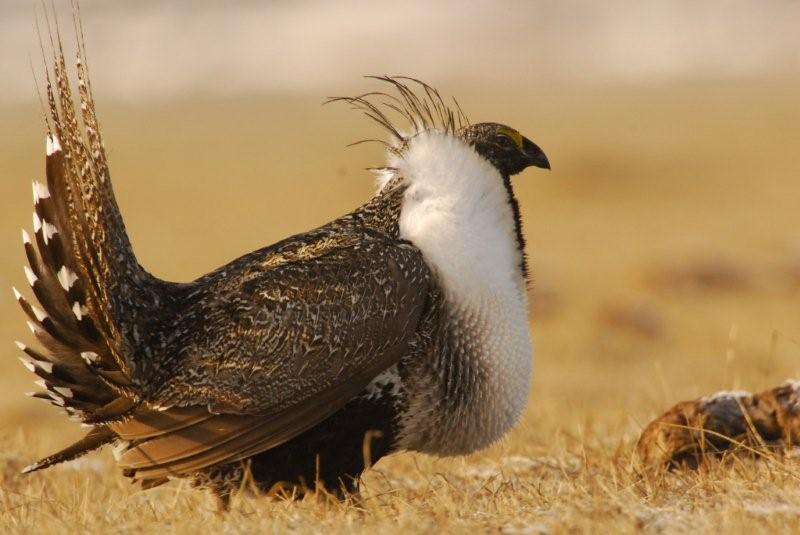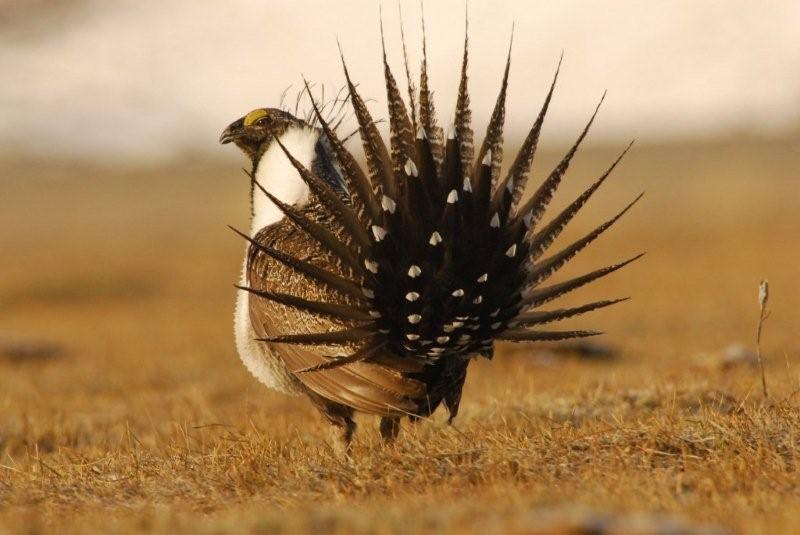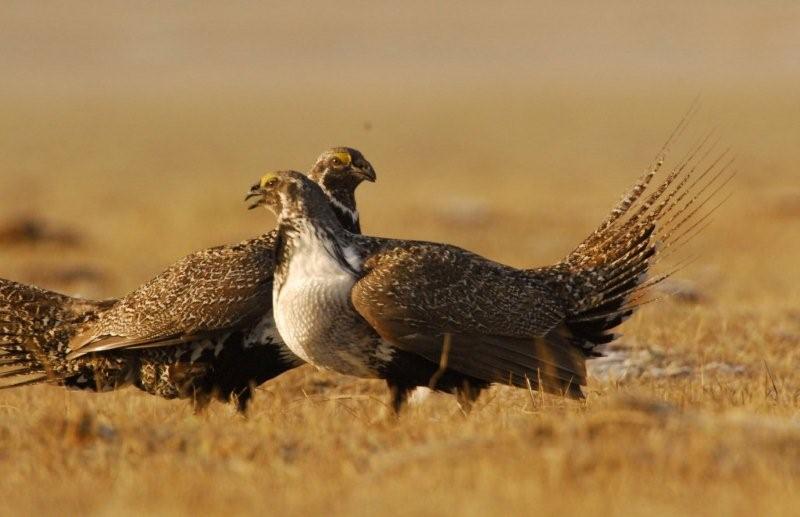
Observers: Donna Willey
Email: basina@verizon.net
Date: 05/05/2008
Time: 07:23 PM -0400
I have visited this area for several springs now and find it a fascinating terrain that includes many different types of birds such as meadow larks and horned larks, pipits and where water runs through it... a riparian habitat with kinglets, warblers and some different types of sparrows; just to name a few birds. But at the end of March one of the most interesting residents is the sage grouse. This spring, due to the heavy snows of winter, when I began my daily walk snow still covered most of the dirt roads and the lek where the sage grouse (SG) gather still had patches of snow on it. It was the last week in March when I trained my binoculars on the lek and saw that the SG males had begun their ritual mating performance. Snow still sat in many places on the lek but the SG were out there in small numbers. Every morning thereafter I walked to my vantage point and watched as more and more male SG joined the numbers of their fellows on the lek and displayed their amazing plumage. After 10 days of observation, a large number of male grouse were displaying on the lek. I noticed every day now females were participating; either watching the males as they stood on the sidelines or finally flying into the center of SG males where mating had begun to take place. I have read descriptions on the internet of the lek mating rituals and some of them say that the females only mate with one or two males but this is not what I have witnessed in the past 3 years. It is true there are many males displaying their wares, so to speak, but I think there is a method to the madness, if it be madness. The lek is very flat with no cover whatsoever. Which would make it difficult for predators to sneak up on the birds. However, if a predator did come looking for a meal they would focus their attack on the displaying males on the periphery of the lek; on the outer ring of the circle of displaying males. It is these males that I think of as being the decoys and lookouts, so to speak, the younger males, less experienced than the males that display in the inner circle of SG. The females, when they do start coming, because they are not noticeable when the males first gather, fly to the center of the displaying males and that is where I have seen a good deal of SG copulation take place. I think that the males in the center of the display area well might be the most experienced SG, the older males who have won their place at the center of the displaying horde. The SG males on the outer ring of the great circle act as decoys and lookouts if you will, protecting the inner circle where mating is taking place. The males in the center mate freely with any females that will allow it and it is most assuredly more than one or two males that are mounting the ready females. Now these are my ideas from watching the lek these past 3 years and this is not to say that I have not seen females on the sidelines also doing some mating with males on the outer periphery, because I have seen a little of this also but, it has been very limited. I think for a species to succeed in surviving they must institute mechanisms of survival that work. Perhaps some of what I've come up with are valid and true. Certainly, whenever I walk through this area of sage brush, which is crucial to the SG's survival, I find SG remains. I always wonder to myself which predator was responsible for the remains I have found??? Was it a bobcat? Was it a coyote? Was it perhaps a cougar passing through the area in the early morning and stumbling upon the SG had himself a wonderful meal. My point being, SG life is fraught with some difficulties. The mating rituals are over for another year and I add my observations to those of others far more knowledgeable than I. I pray and hope we preserve our sage brush lands in CA, NV, WA, CO, OR, UT, ID, MT & WY and any other state containing acres of sage brush that harbors the amazing and beautiful Sage Grouse.







